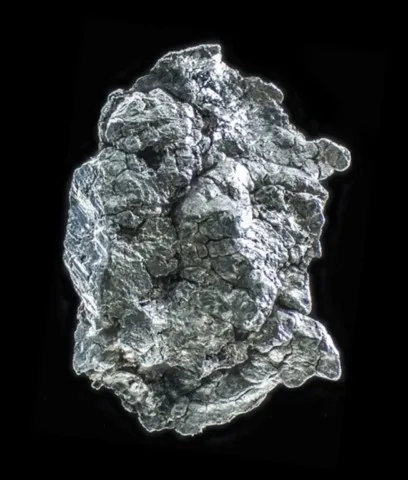PALLADIUM
Class : Elements
Subclass : Metals
Crystal system : Cubic
Chemistry : Pd
Rarity : Very rare
Palladium belongs to the platinum group minerals. It is the lightest of these heavyweights, its density being "only" 11.9. It frequently admits small quantities of platinum, osmium and iridium. It is an accessory mineral in platinum-bearing nickel or chrome ores of large mafic stratified complexes. It is either primary, associated with native platinum and sperrylite, or secondary coming from the alteration of palladium sulfides. Unalterable, it is perfectly preserved in alluvial deposits. It was named thus to salute the discovery of the asteroid Pallas in 1802. Palladium occurs in small xenomorphic grains, sometimes with a fibroradiated texture, exceptionally in small octahedral crystals. Its steel gray color becomes matte and dull through wear in alluvial sands, like platinum. It is exceptionally a palladium ore, it is notably used in alloy with gold to create “white gold” for jewelry.
Main photo : Alluvial palladium from Córrego Bom Sucesso, Minas Gerais, Brazil © Luciano Valério
Palladium in the World
Twinning
No twins known for this mineral species.
Fakes and treatments
No fakes listed for this mineral species.
Hardness : 4.5 to 5
Density : 11.9
Fracture : Irregular
Streak : Steel gray
TP : Opaque
RI : -
Birefringence : 0
Optical character : None
Pleochroism : None
Fluorescence : None
Solubility : Nitric acid
Magnetism : NoneRadioactivity : None

